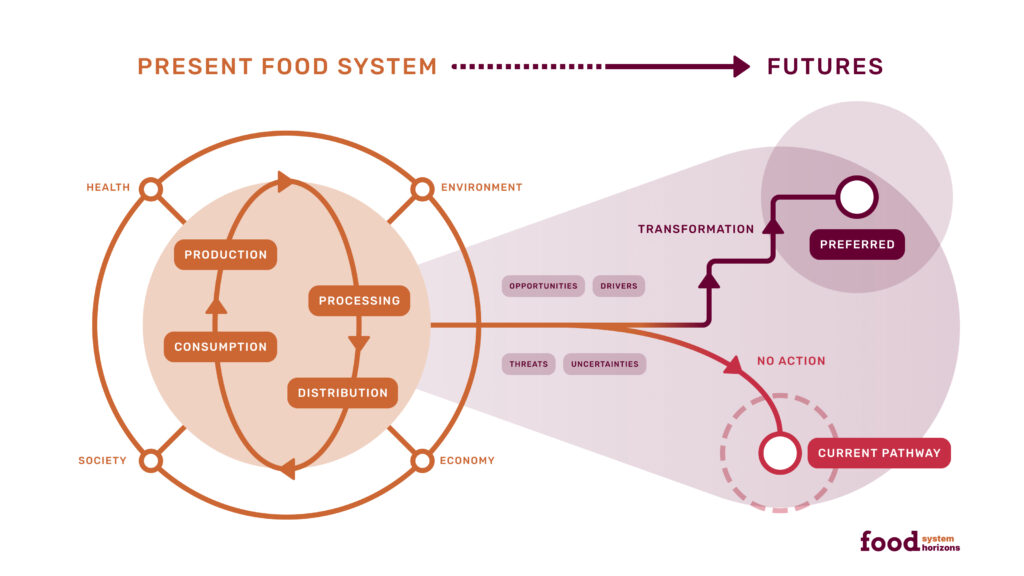Food System Horizons is helping Australians think differently about how food can provide opportunities and benefits for sustainability, health, equity, and productivity.

Why Food System Horizons?
Australia’s food system is facing complex sustainability challenges. There are many opportunities to use multidisciplinary science to improve our food system, and with it our health, environment, society, and economy.

What Food System Horizons does
Through Food System Horizons, The University of Queensland and CSIRO are using science to help Australians understand the food system, their roles in it, and who they need to work with to develop a more sustainable, nutritious and equitable food system.
What is a food system?
The term food system refers to all the components that are required to feed people. These interconnected components include production, processing, transport, distribution, marketing, consumption, and waste as well as the associated activities, people, and inputs.
The interactions and feedback between these components and drivers of change in the food system make it very changeable. The food system results in outcomes that impact our health, the environment, our society and the economy.
Why take a systems perspective?
Taking a systems perspective of Australia’s food system is necessary to manage growing sustainability and social inclusion challenges. These challenges arise from dynamic and surprising interactions between natural resources, agriculture, food processing, distribution, nutrition and human health.
Taking a systems perspective helps us understand our present food system, interactions within it, and what we want it to look like in the future. It also helps us understand how we need to transform towards preferred food futures and avoid futures we do not want.
The left side of the food system futures figure is a simplified representation of the present food system, comprising four components of the food system that include production, processing, distribution, and consumption. The components sit within a circle that indicates that these impact each other. The food system produces outcomes for individual health, the environment, the economy, and society. These outcomes are shown in a concentric circle around the food system components, indicating their interrelationship with the components and their impact on each other.
In the middle of the food system futures figure, there is a single pathway emerging from the present food system towards food system futures. This pathway is impacted by opportunities, drivers, threats, and uncertainties. Towards the right side of the figure, this pathway diverges to two different pathways. One pathway labelled the current pathway indicates no action is taken and continues downward to the bottom of the figure. The second pathway labelled preferred goes upwards in steps, which are labelled transformation, indicating that we can have a preferred food system future through transformation. All of the pathways occur within a cone of colour, which indicates that there are many different pathways, and thus many different food system futures.
Projecting food systems into the future. Citation: Food System Horizons 2024.
Insights
Data
Food System Horizons analyses data on Australia's food system to better understand its state and identify opportunities for improvement and change.
We also synthesise data that helps to improve understanding of interactions across the food system and their implications for health, society, environment, and the economy.
Briefs
Food System Horizons is helping decision-makers across Australia to explore the benefits of more coherent approaches to food policy.

Research
Projects
Food System Horizons uses systems-level analysis to explore how food systems can be more sustainable, nutritious, equitable, and resilient to challenges such as climate change.
Some of our projects explore opportunities for improving the system as a whole. Other projects focus on improving particular components of the food system, and their interactions with other parts of the system.
Resources
Food System Horizons publishes leading research through briefs, reports, and scientific journal articles that addresses key challenges for food systems.

Food System Horizons is a collaborative initiative between The University of Queensland and CSIRO.

